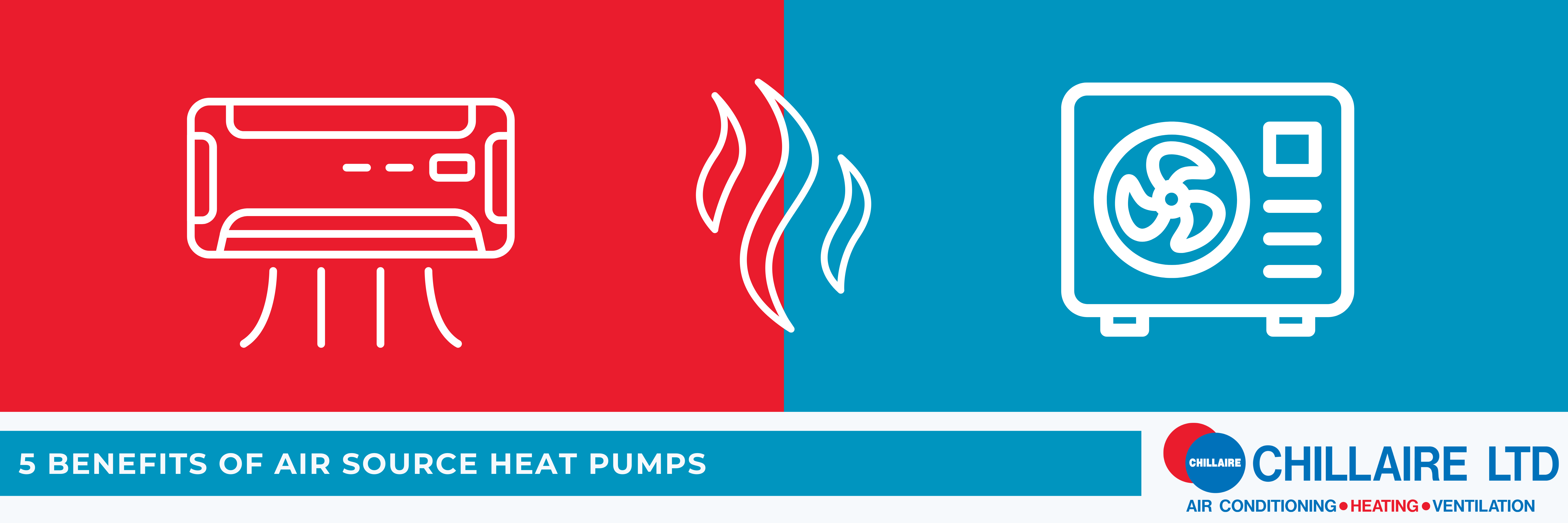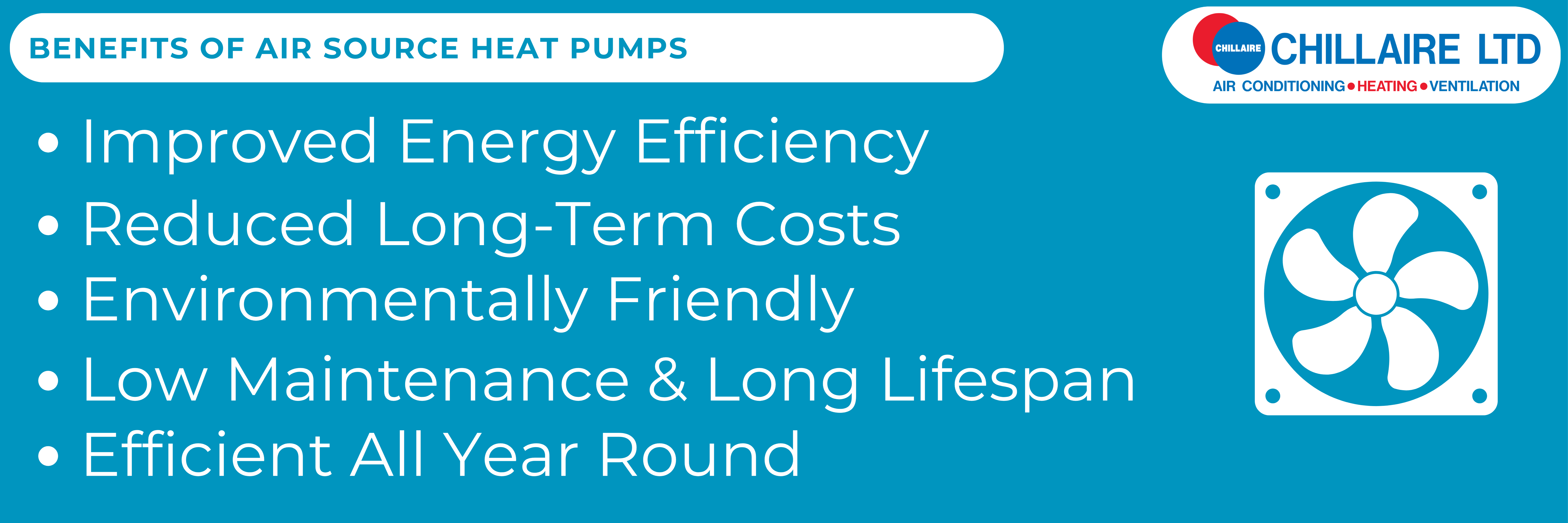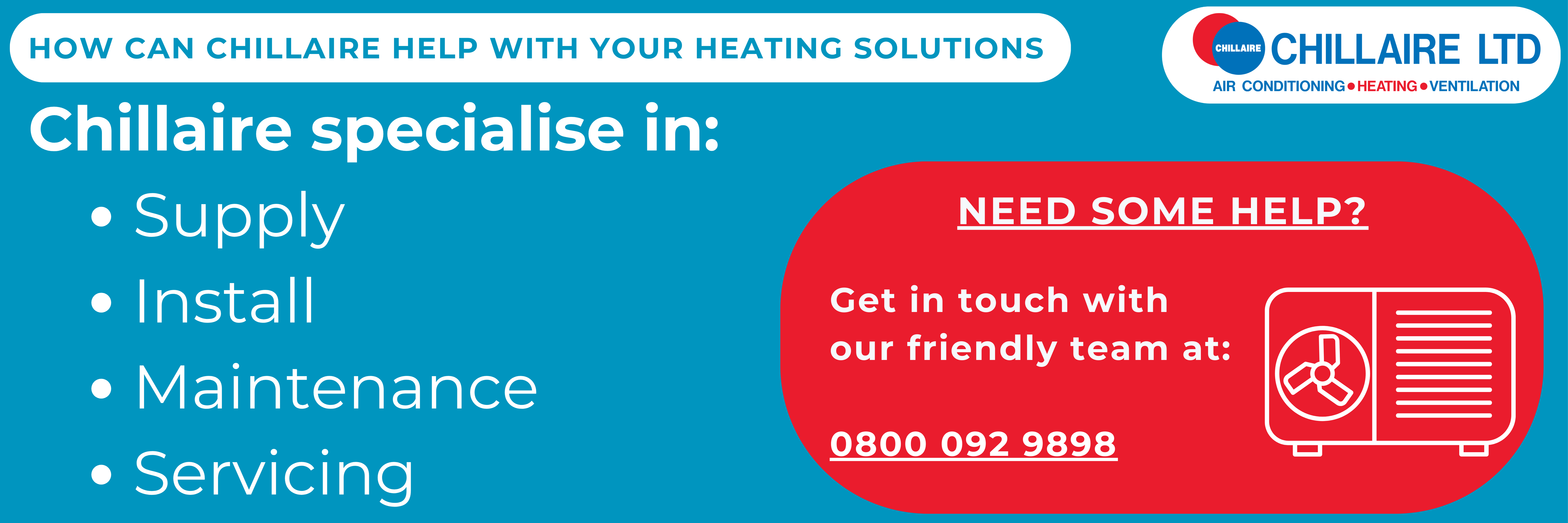
5 Benefits of Air Source Heat Pumps
With the rise of environmentally friendly heating options, air source heat pumps are becoming more common for industrial application. Their sustainability and energy efficiency makes them a popular choice for heating solutions in commercial properties.
Within this article, we will discuss five benefits of air source heat pumps and how Chillaire can help with your heating requirements.
What Are Air Source Heat Pumps
An air source heat pump (ASHP) is a heating system designed to extract the heat from the outdoor air and transfer it indoors using refrigerant reverse cycle technology. This heat is then circulated around your building, heating your rooms, offices and water, when necessary.
ASHPs can be an energy efficient heating solution for your property, however this is not always the case. In the current market, air source heat pumps have certain limitations in their kW capability that sometimes cannot match the efficiencies of traditional gas boilers. As these technologies further develop, we will see the efficiency of ASHPs continue to increase, making them a more viable system in the long-term.
For a full in-depth guide to air source heat pumps, take a look at one of our latest articles.
What Are the Benefits of Air Source Heat Pumps

Improved Energy Efficiency
Air source heat pumps can provide an improved energy efficiency when compared to traditional heating systems such as gas and oil. This is because, unlike older technology, air source heat pumps do not create their own heat, they move it using an electrical compressor.
On average, ASHPs can achieve efficiencies from 120% to 300%, meaning they produce three times more energy than they consume. When you compare this to a gas boiler’s average 90% efficiency, you can see why air source heat pumps are becoming more and more popular. However, as the demands of the system increase, so does the electrical power consumption, and therefore the efficiency begins to reduce.
In large commercial or industrial spaces that require an extreme kW capacity, air source heat pumps may not be the answer. To find out if air source heat pumps are a reliable and efficient system for you, contact our team.
Reduced Long-Term Costs
Although the initial installation costs of air source heat pumps can be quite expensive, they can reduce costs in the long-term. Their energy efficiency compared to oil and gas translates to lower energy bills and reduced carbon emissions.
When partnered with other renewable energy sources, your costs can become more stable as you are less subject to the fluctuating prices of the oil and gas markets. Plus, as electricity grids become greener in the future, you could see an even better return on your investment.
Environmentally Friendly
If you are looking to do your part for the planet, air source heat pumps are a no-brainer. When compared to traditional gas and oil boilers, ASHPs can substantially reduce your carbon footprint by up to 60% for medium-sized businesses. The exact amount of carbon reduction will vary depending on the size of your premises and your current heating system.
When you begin to calculate your carbon footprint reduction across multiple years and decades, you can see the positive environmental impact of air source heat pumps compared to traditional heating systems
Low Maintenance and Long Lifespan
If you are worried about the lifespan of an air source heat pump, rest assured that they in fact last longer than their traditional counterparts. If they are regularly serviced and maintained, you can expect your ASHP to last for at least 15 years.
Although we do recommend an annual service on your system to maintain its efficiency, air source heat pumps tend to be very low maintenance. If your unit is in need of maintenance, get in touch with our team today.
Efficient All Year Round
Air source heat pumps are specially designed for both heating and cooling purposes, making them useful all year round. If your unit is maintained, you can expect it to work throughout the seasons, with some brands, such as Daikin, working in temperatures as low as -25°C.
How Can Chillaire Help With Your Heating Solutions

Here at Chillaire, we have been supplying, installing and maintaining HVAC systems for over 30 years. We take pride in our customer service, ensuring our clients receive the highest level of service and are left feeling satisfied.
Our team specialise in the installation and maintenance of air source heat pumps in commercial and industrial buildings. We cater to your requirements, providing a bespoke service you can rely on.
Whether you are looking for a new installation, servicing or repair, Chillaire has you covered. Fill in the enquiry form below or give us a call to discuss your commercial heating needs.
Get In Touch.
This enquiry is sent to us by email & text. Saving you time and hassle!


